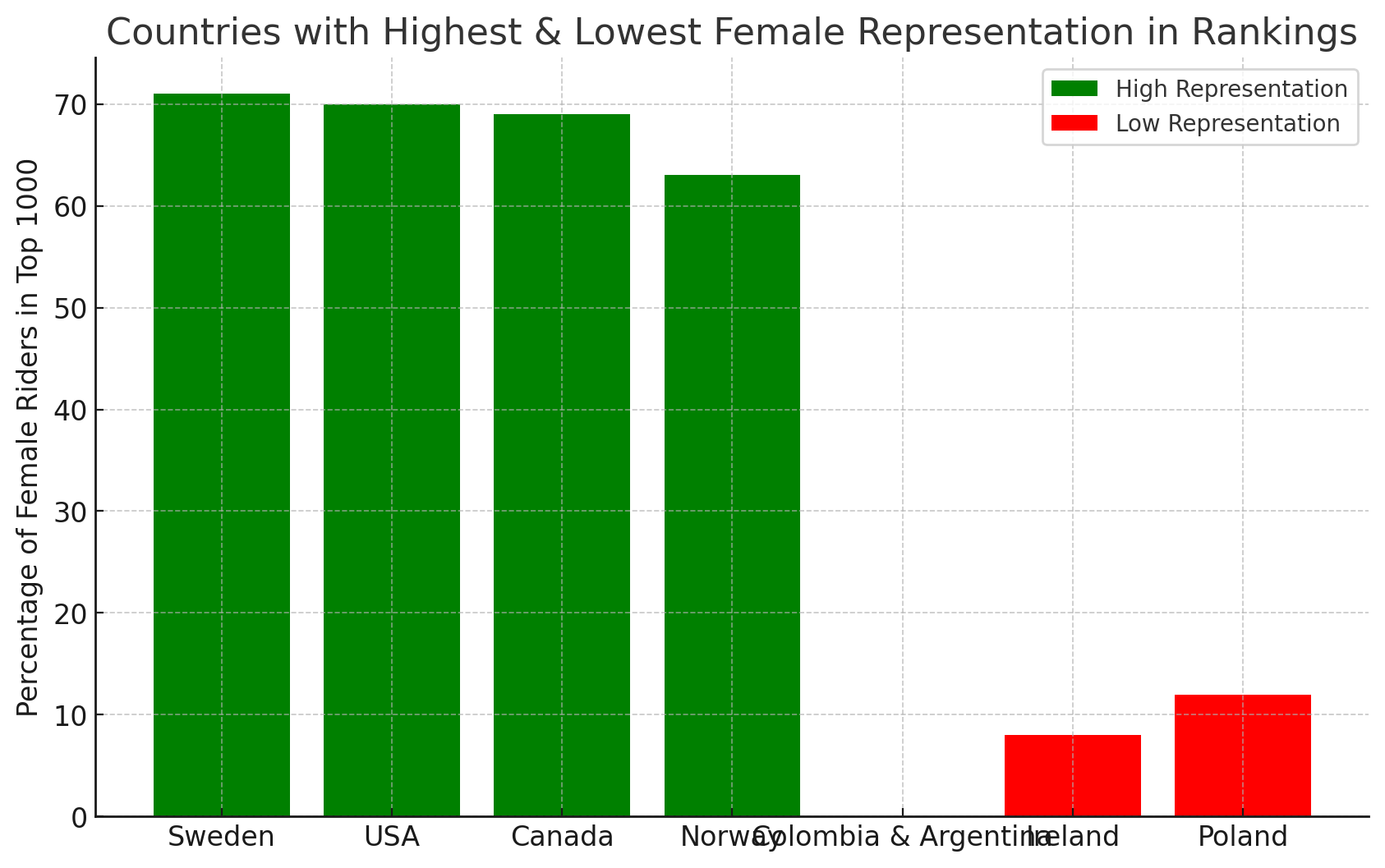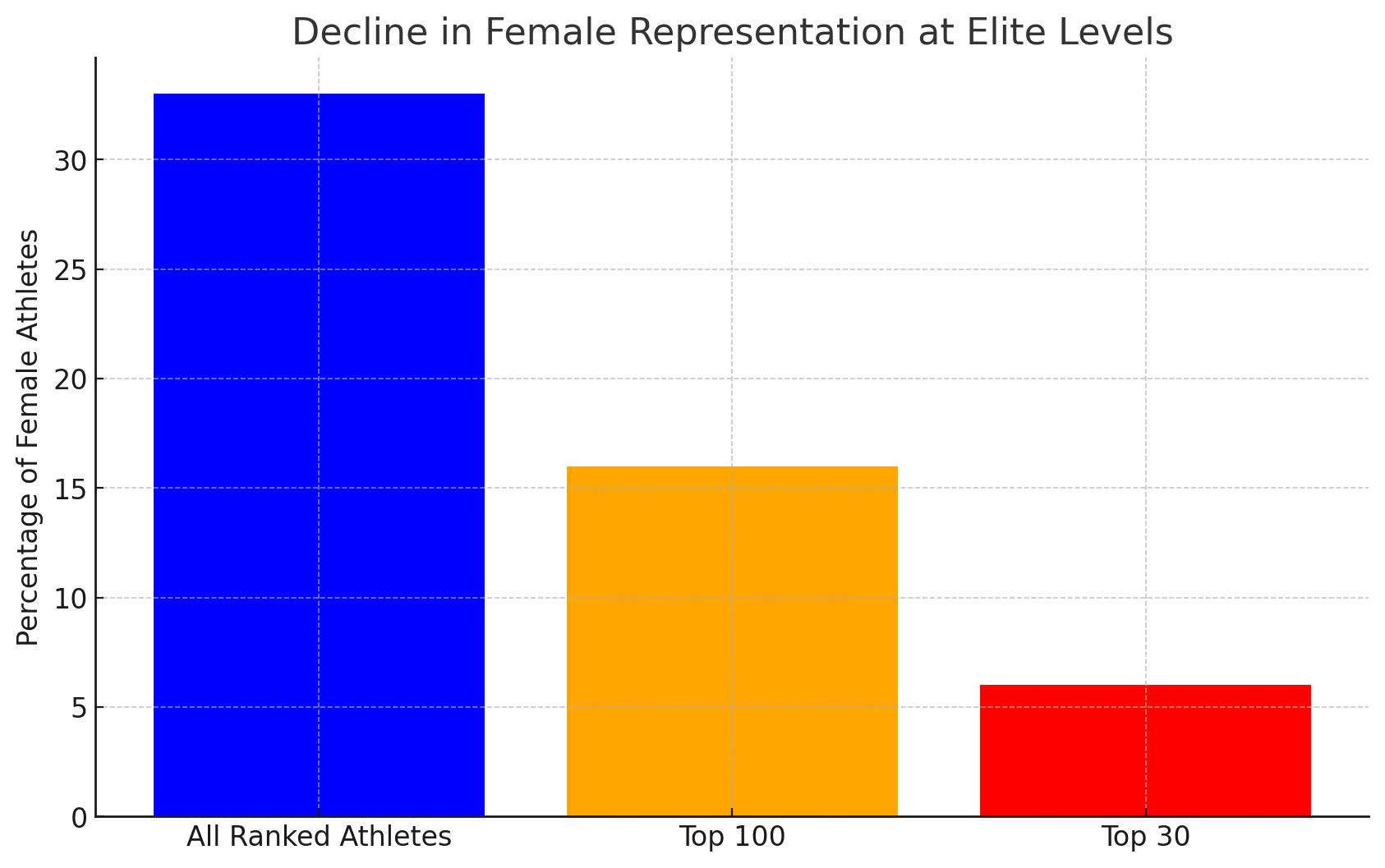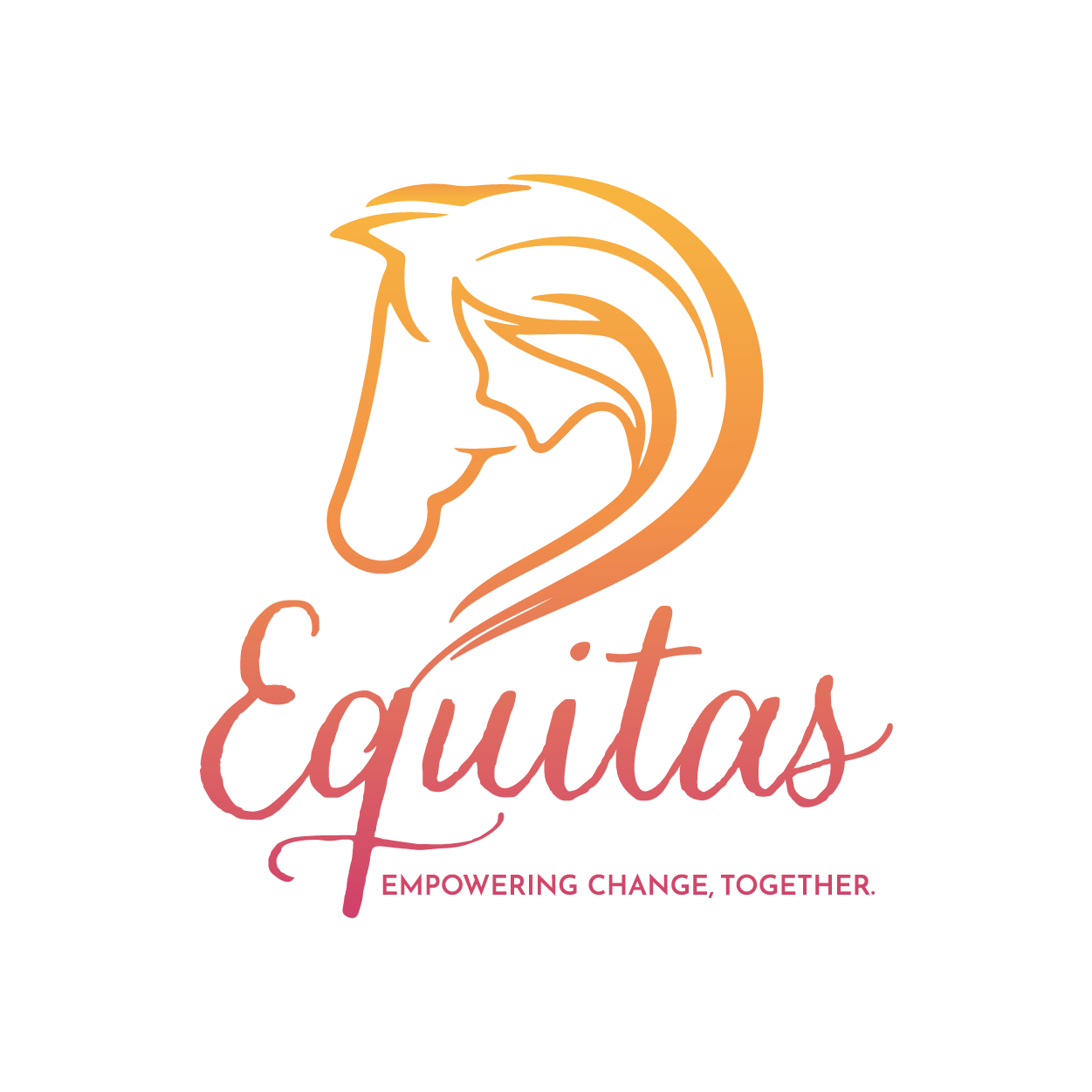The Power of Representation: Visibility, Equity, and the Future of Women in the Equine Industry

In July 2023 FEI published 'Gender in FEI Sports' report providing a comprehensive overview of gender representation across equestrian disciplines, revealing both progress and persistent inequalities. While equestrian sports are often considered among the most gender-inclusive, the data highlights a stark reality: women continue to face visibility challenges, particularly at elite levels. If women in the industry cannot be seen, they cannot be celebrated, sponsored, or given the opportunities they deserve. Media plays a crucial role in shaping this landscape, and without intentional focus, the generational change required for true equity will remain stagnant.
The Numbers: What the Report Tells Us

Figure: Overall gender representation based on FEI data. Credit FEI Report
The FEI report highlights a gradual increase in female participation over the past decade, with 54% of registered athletes now being women. However, the deeper issue arises when analysing elite rankings. Across all major equestrian disciplines, female representation drastically declines in the upper echelons:
- 33% of all ranked athletes are female
- 16% in the top 100 rankings
- Only 6% in the top 30 rankings
A look at the top 1000 equestrians across disciplines further underscores disparities. Only four nations have more female than male riders ranked:
- Sweden (71% female)
- United States (70% female)
- Canada (69% female)
- Norway (63% female)
Meanwhile, several nations remain heavily skewed towards male representation:
- Colombia & Argentina (0% female riders in the top 1000)
- Ireland (8% female riders)
- Poland (12% female riders)
Denmark and Australia stand out with a 50/50 split

Figure: Countries with the highest and lowest female representation in rankings. Credit: FEI Report
Why Visibility Matters: If Women Can’t Be Seen, They Can’t Be Celebrated
The most significant issue at play is not simply participation, but visibility. Without equal representation in media, sponsorships, and leadership roles, female equestrians struggle to gain the recognition necessary for long-term success.
- Sponsorship Disparities: Sponsorship deals are largely driven by visibility. Male riders often secure more lucrative deals because they receive more media coverage, creating a self-perpetuating cycle where financial backing continues to favour men.
- Event Coverage Bias: Many major competitions provide significantly more screen time, interviews, and promotional materials featuring male athletes. This influences audience perception of who belongs at the top levels of the sport.
- Coaching & Mentorship: With fewer high-profile female role models, upcoming generations struggle to envision their own path to the top. The presence of visible female mentors is crucial in inspiring and developing new talent.
- Historical Precedents: In many nations, the structure of elite equestrian sport was historically built around male dominance, making it harder for women to break through at the highest levels.
The Role of Media in Driving Generational Change
If the equine industry is to truly achieve gender equity, the media must become an active participant in the solution. The following areas must be prioritised to create lasting change:
- Equitable Storytelling – Major sports networks, equestrian publications, and digital platforms must commit to highlighting female athletes with the same depth and frequency as their male counterparts.
- Data-Driven Accountability – The industry must track and publicly report on gender disparities in coverage, sponsorship deals, and competition visibility.
- Spotlighting Female Mentorship – More focus should be placed on showcasing successful female trainers, owners, breeders, and sponsors who support women in the industry.
- Challenging Biases in Sponsorships – Brands should be held accountable for equitable investment in both male and female athletes, ensuring that financial backing reflects performance, not just media exposure.
- Encouraging Youth Representation – The next generation of female equestrians must see themselves in top competitors today. Ensuring media coverage of young talent can help shape a more equitable future.

Figure: Drop in female representation from all ranked athletes to the top 100 and top 30. Credit: FEI Report
Actionable Next Steps for Equitas and equine media
At Equitas, representation drives change. Women in the equine industry must be seen, valued, and supported. The key? A powerful combination of community-driven storytelling and AI amplification.
AI enables us to accelerate visibility—transforming data into striking infographics, crafting feature stories that inspire, and driving social media campaigns that amplify female voices. It helps us reach wider audiences, create deeper engagement, and push for industry-wide change at scale.
But AI is just the tool—our community is the heart. Through shared experiences, real conversations, and bold advocacy, we challenge the status quo and demand better. Visibility is not a privilege—it’s a necessity. Equitas is ready to lead this charge. Will you stand with us?
Will you be part of the change?
References:



